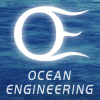|
Kate Van Ness Research Engineer Senior kvanness@uw.edu Phone 206-543-1426 |
Education
B.S. Mechanical Engineering, Bucknell University, 2016
B.A. Physics, Bucknell University, 2016
MS Mechanical Engineering, University of Washington, 2019
PhD Mechanical Engineering, University of Washington, 2022
|
Publications |
2000-present and while at APL-UW |
Experimental identification of blade-level forces, torque, and pitching moment for cross-flow turbines Snortland, A., K. Van Ness, J.A. Franck, A. Athair, O. Williams, and B. Polagye, "Experimental identification of blade-level forces, torque, and pitching moment for cross-flow turbines," J. Fluids Struct., 138, doi:10.1016/j.jfluidstructs.2025.104403, 2025. |
More Info |
1 Nov 2025 |
|||||||
|
Cross-flow turbine power is a net sum of power generation from rotating blades and power loss from rotating support structures. While the aggregate forces and torques at the turbine level are important for end use, these can inhibit a deeper understanding of fluid-structure interactions. Identification of blade-level forces and torques allows for specific investigations into how the fluid forcing on the blade drives rotation and can aid blade structural design. Here, we present a physics-based methodology for extracting blade-level forces and torques from experimental measurements at the axis of rotation of a cross-flow turbine, and demonstrate strong agreement with equivalent blade-only simulations. In doing so, we highlight the often-overlooked pitching moment, which offsets continuous increases in power generation from the tangential force and leads to net-zero power generation at freewheel. |
|||||||||
APL-UW Field-Scale Axial Flow Turbine: Design and Specifications Bassett, C., J. Burnett, K. Van Ness, H. Wood, J. Dosher, B. Cunningham, J. Noe, and T. Tran, "APL-UW Field-Scale Axial Flow Turbine: Design and Specifications," Technical Report, APL-UW TR 2402, Applied Physics Laboratory, University of Washington, Seattle, September 2024, 27 pp. |
More Info |
29 Aug 2024 |
|||||||
|
Axial flow turbines designed to generate power from underwater currents (tidal and riverine) are similar to the commonly observed wind turbines. With support from U.S. Naval Sea Systems Command, engineers at the Applied Physical Laboratory of the University of Washington (APL-UW) have designed and fabricated a one-meter diameter axial flow turbine for use in APL-UW’s marine energy research program. The system, referred to as the AFT (axial flow turbine), is designed for deployment from R/V Russell Davis Light, where the vessel, under propulsion, is used to simulate naturally occurring currents for power generation. This report summarizes the AFT’s mechanical and electrical design and is intended as a reference to support research efforts performed using the system. Encoders and six-axis load cells installed on the driveshaft and at the root of one of the rotor’s three blades, allow for characterization of the forces and torques generated during operation. The system was designed for reliability and to acquire scientific-quality data to advance studies of axial flow turbines. Thus, system components selected in the design process are not intended to maximize system efficiency and power extraction. |
|||||||||






